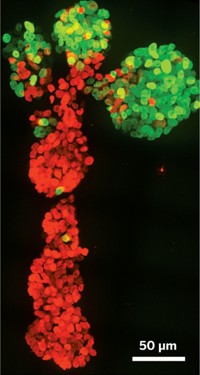Advertisement
Grab your lab coat. Let's get started
Welcome!
Welcome!
Create an account below to get 6 C&EN articles per month, receive newsletters and more - all free.
It seems this is your first time logging in online. Please enter the following information to continue.
As an ACS member you automatically get access to this site. All we need is few more details to create your reading experience.
Not you? Sign in with a different account.
Not you? Sign in with a different account.
ERROR 1
ERROR 1
ERROR 2
ERROR 2
ERROR 2
ERROR 2
ERROR 2
Password and Confirm password must match.
If you have an ACS member number, please enter it here so we can link this account to your membership. (optional)
ERROR 2
ACS values your privacy. By submitting your information, you are gaining access to C&EN and subscribing to our weekly newsletter. We use the information you provide to make your reading experience better, and we will never sell your data to third party members.
Biological Chemistry
Nanostructured Film Eases Protein Passage
New method allows large proteins to pass directly through epithelial tissue
by Journal News and Community
December 17, 2012
| A version of this story appeared in
Volume 90, Issue 51
Large proteins can slip through a layer of epithelial cells when researchers place a nanostructured thin film of polymer onto the tissue, a format that eventually could serve as a delivery aid for protein-based drugs (Nano Lett., DOI: 10.1021/nl3037799). Bioengineer Tejal A. Desai of the University of California, San Francisco, used silicon molds to produce polypropylene films covered with carpets of tiny polymer pillars, either 300 nm or 16 µm tall. Her team placed the polymer films onto layers of human intestinal epithelial cells and measured the transport through the layers of three large proteins: immunoglobulin G, bovine serum albumin, and etanercept, which is an arthritis and psoriasis drug. Significantly more protein molecules of each type passed through the cell layer in contact with films covered with short nanopillars than with smooth films or films with the longer pillars. On the basis of observations made via microscopy, the scientists hypothesize that receptors on the cell surfaces that normally link up with other cells instead grab onto these nanopillars. This swap could disrupt the cell-to-cell connections, allowing space for the drugs to slip through.





Join the conversation
Contact the reporter
Submit a Letter to the Editor for publication
Engage with us on Twitter